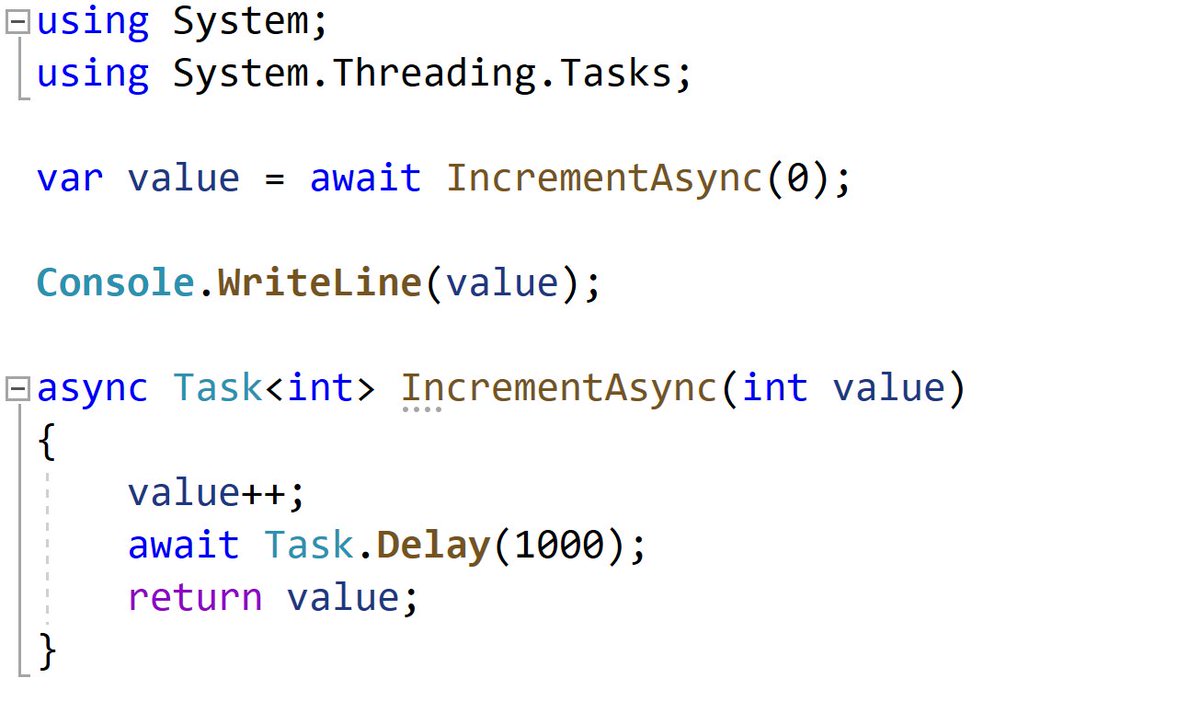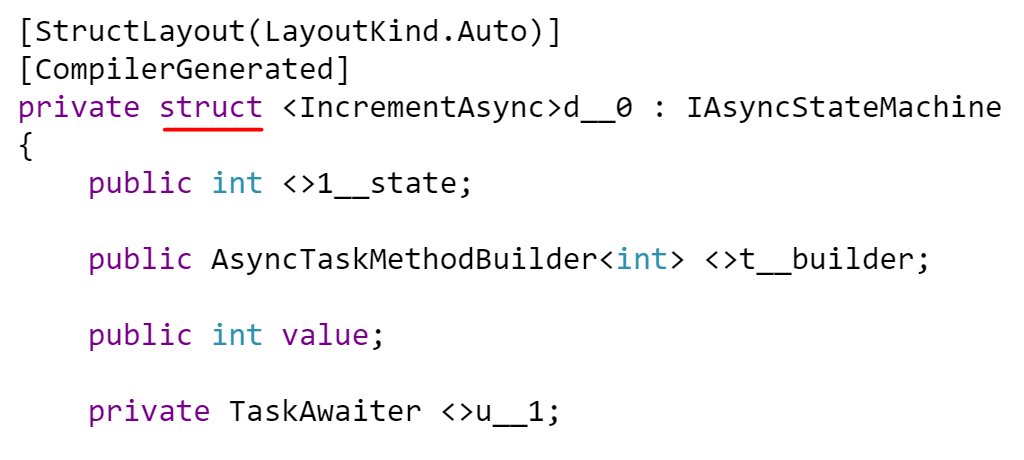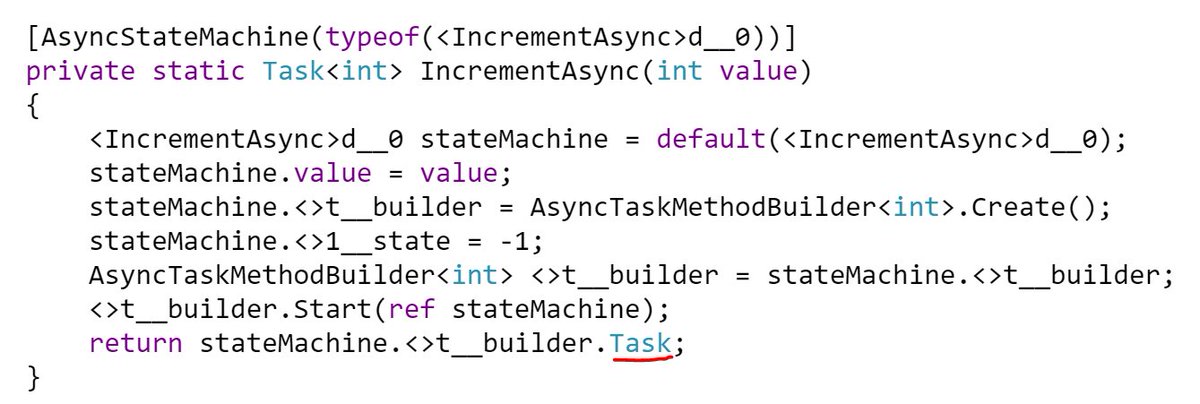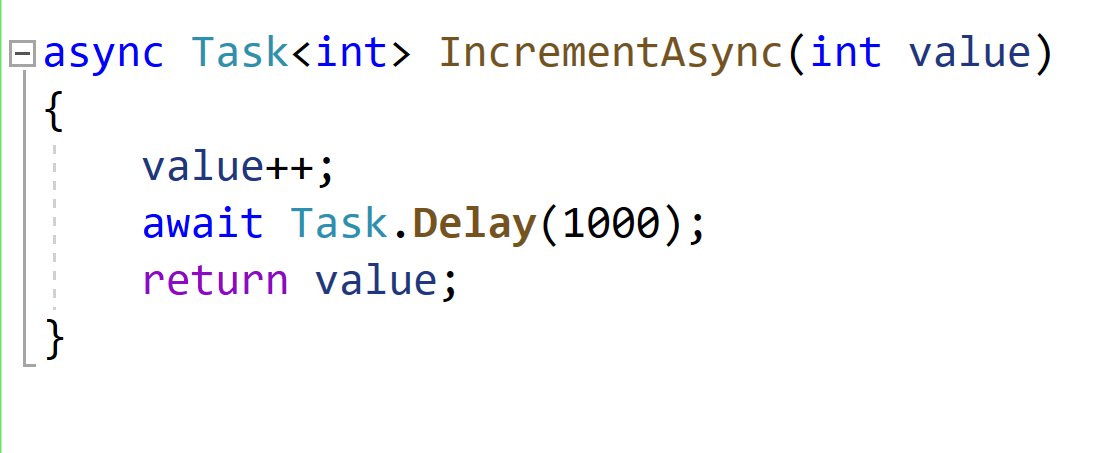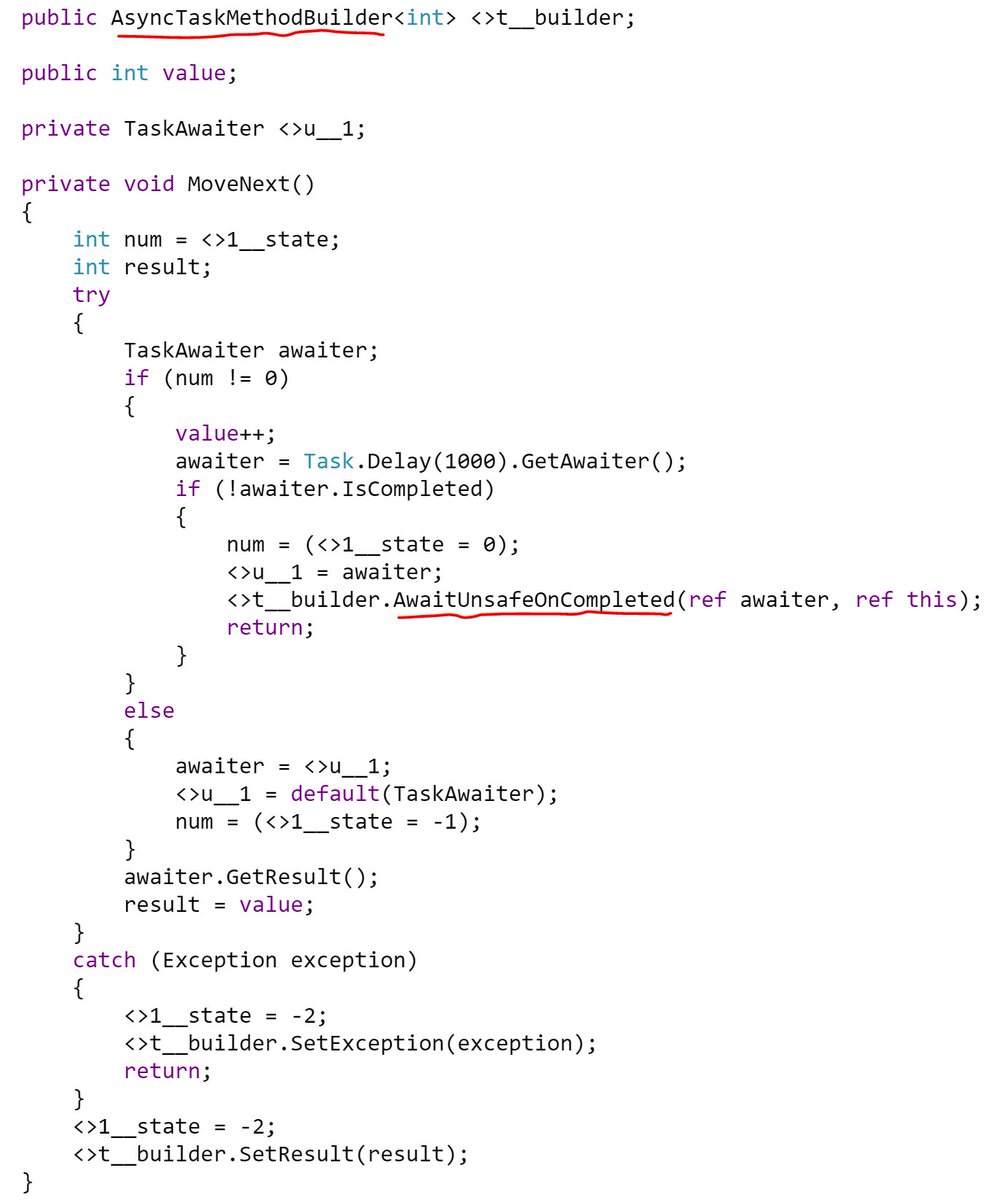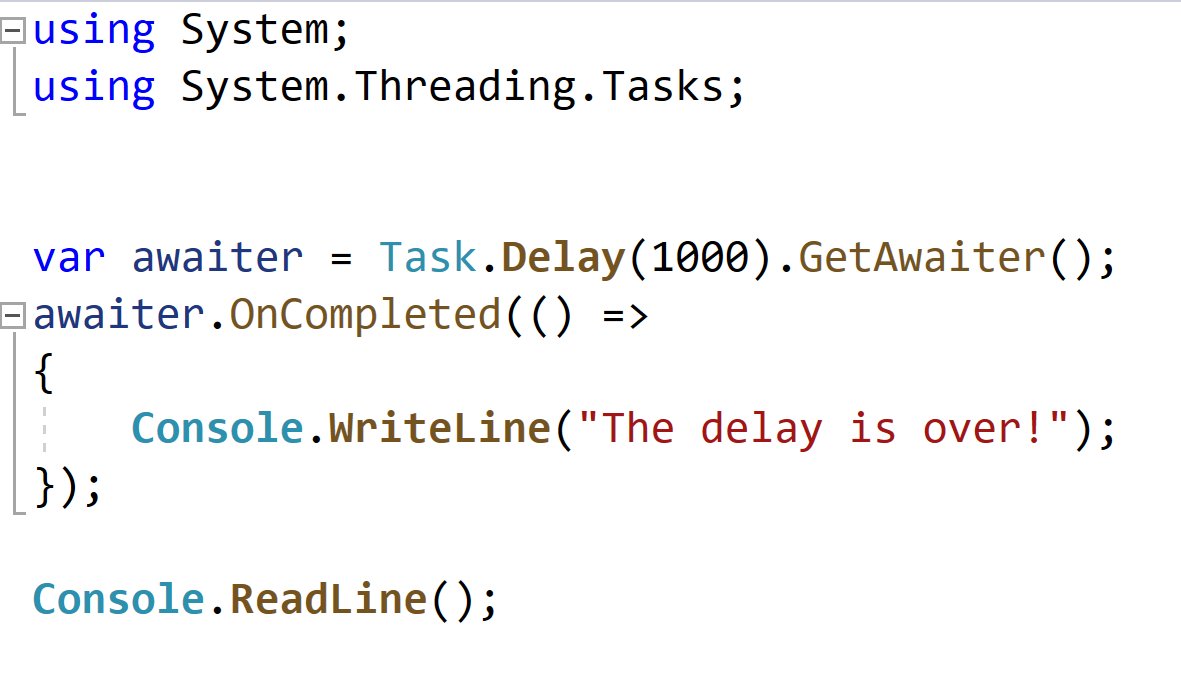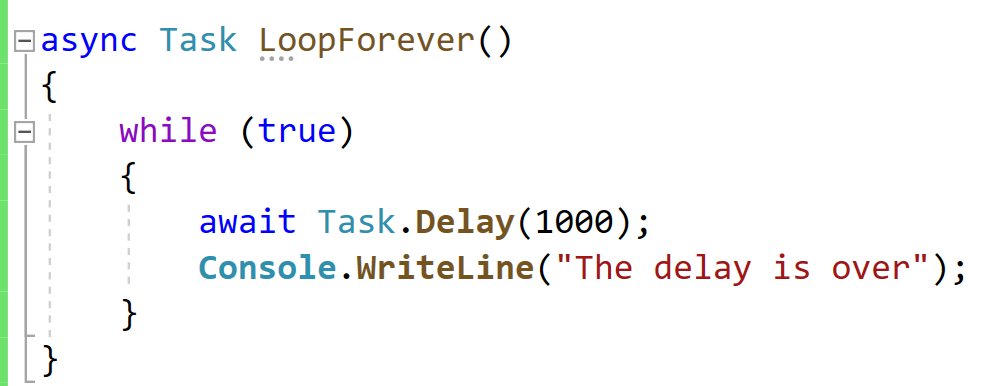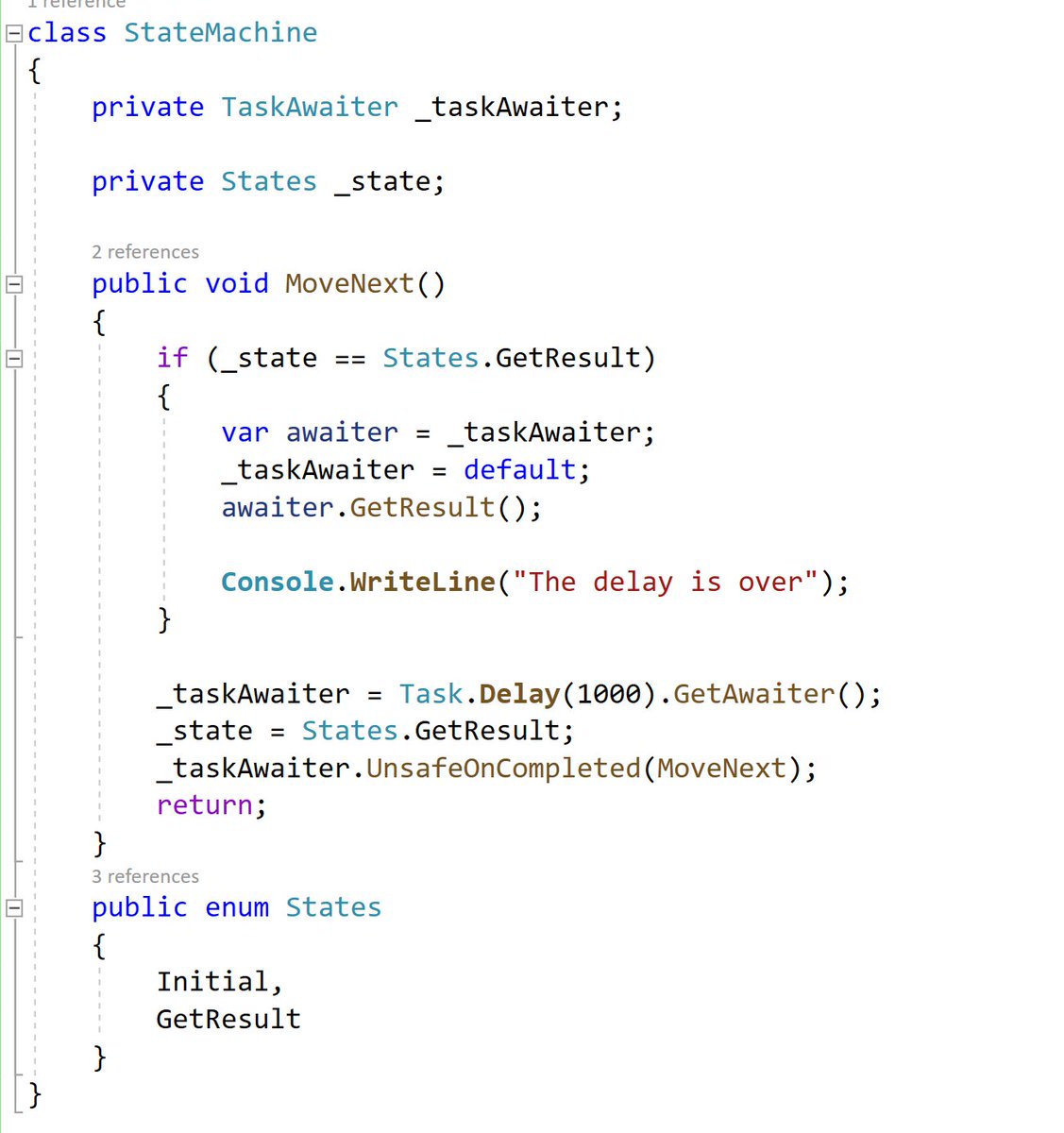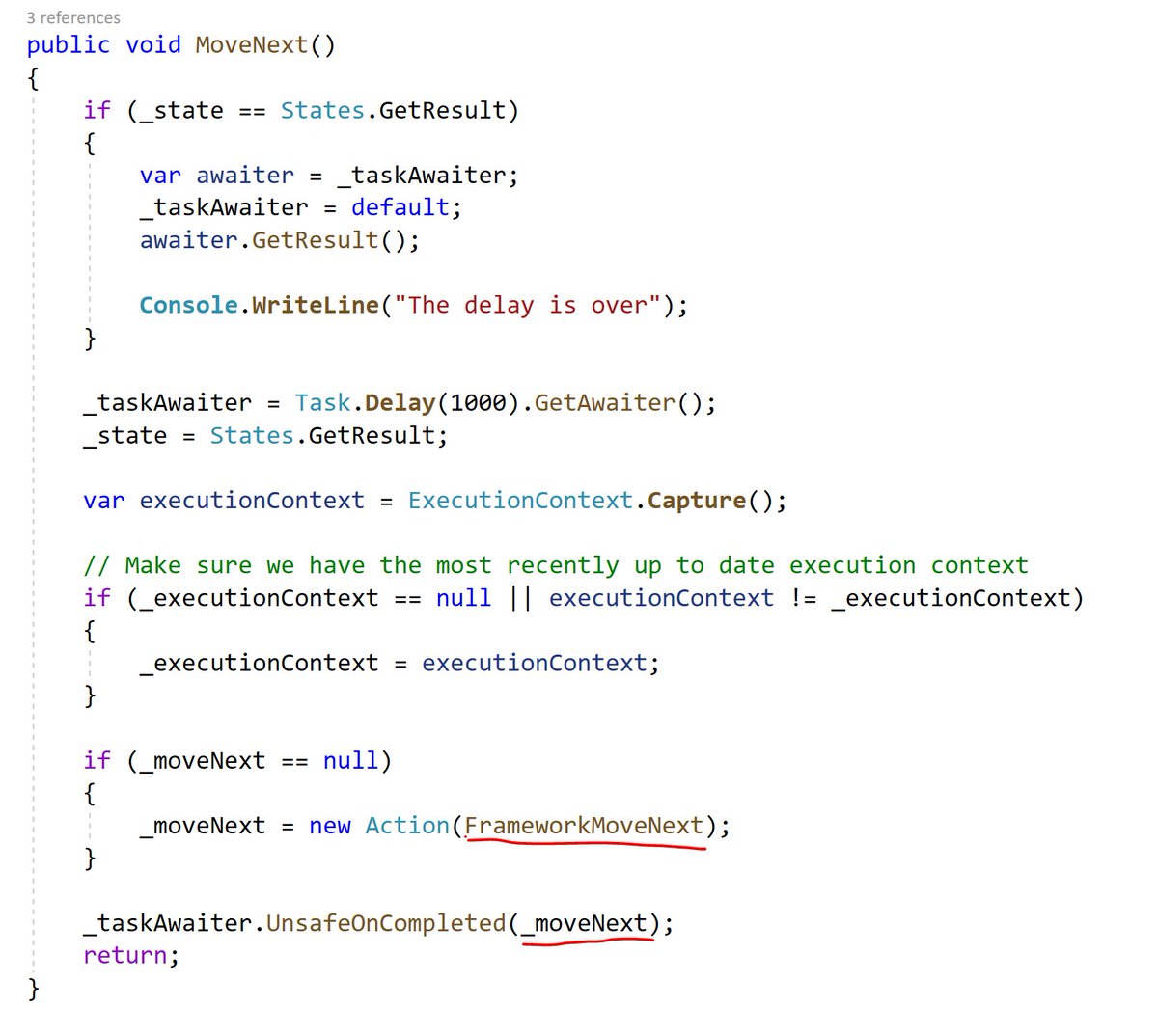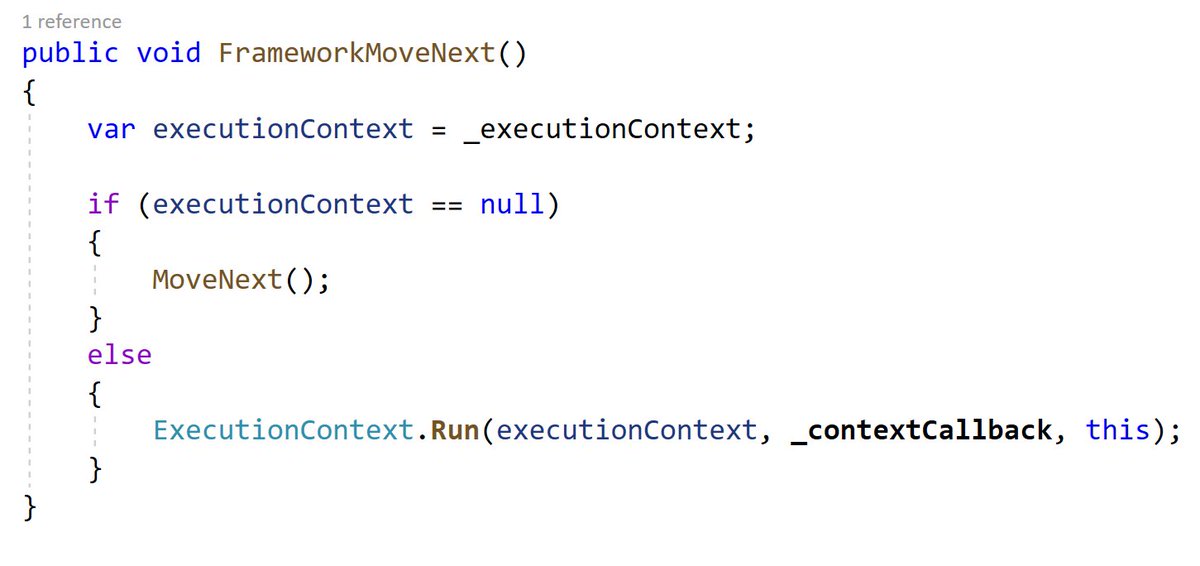- Moving the state machine from the stack to the heap (boxing)
- It needs to capture the execution context (remember this!?)
Side note: C# allows you to write your own Task-like types (invent your own promise type) and you can make any object awaitable.
- Reusable allocations for things like socket reads and writes
- Reusable state machine for scheduling
- Less allocations per state machine

